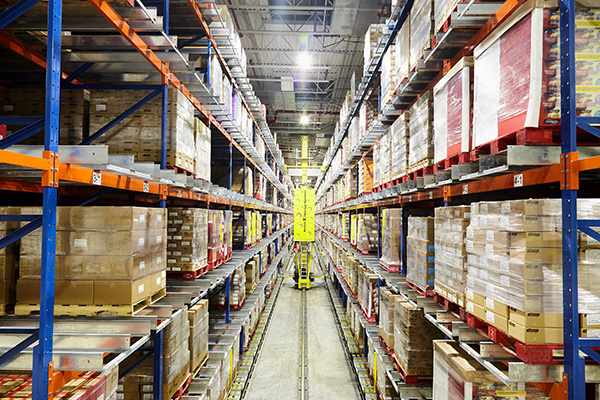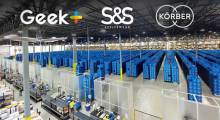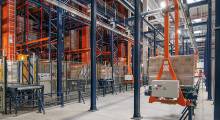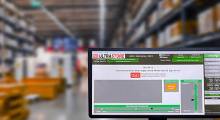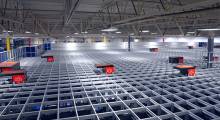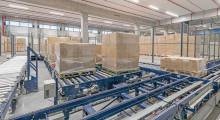Warehouse automation isn't just for e-commerce; food and beverage is another sector that can benefit from high-density storage and robotics, according to Westfalia Technologies Inc. The York, Pa.-based company cited the example of Sargento Foods Inc. that was anything but cheesy.
There's a reason cheeseheads live in Wisconsin, a state with a long history in the cheese industry dating back to 1837. In fact, there were over 2,800 cheese factories in the northern border state by the 1920s, so it's no surprise that modern commercial cheeses originate there as well.
Founded in 1953 in Plymouth, Wis., Sargento has grown into a powerhouse of cheese manufacturing. The company claimed that it successfully introduced America to pre-packaged sliced and shredded natural cheeses and cheese blends.
Originally specializing in Italian cheese varieties, Sargento became one of the largest cheese retail companies in the U.S. The family-owned company also produces snack foods for grocery and convenience stores and ingredients for corporate clients such as restaurants and even other food manufacturers.
For more than 65 years, Sargento said it has continued its quest “to be the most innovative, best-loved real food company by pioneering pre-sliced cheese, vacuum packaging, resealable packaging, and production of shredded cheese and shredded cheese blends.”
Freeing up space poses a challenge
Although Sargento makes high-quality products, the storage and distribution of cheese can be a complicated process. As demand hs continued to increase, warehouse space became scarce, and the company began searching for a way to increase the storage capacity of its current facility to support the growth in its distribution services.
Originally, Sargento had a conventional distribution center (DC) that had experienced a number of expansions over the years. Its management was growing concerned about the depletion of available space for future infrastructure growth. Therefore, Sargento sought a solution that would increase the DC's capacity and extend its life.
Critical to this strategy was the desire to couple the manufacturing process with the warehouse, thereby ensuring that no product was being double-handled, or worse, moved to off-site storage.
The construction and transition plan to use the existing DC extended the overall schedule, but the savings associated with keeping all distribution activities under one roof were too high to ignore, said Westfalia.
As a first step, the team determined important data points, including the size of the warehouse, how much space was used with the traditional picking system, and how much more capacity would be needed to continue growth at the current rate for a number of years.
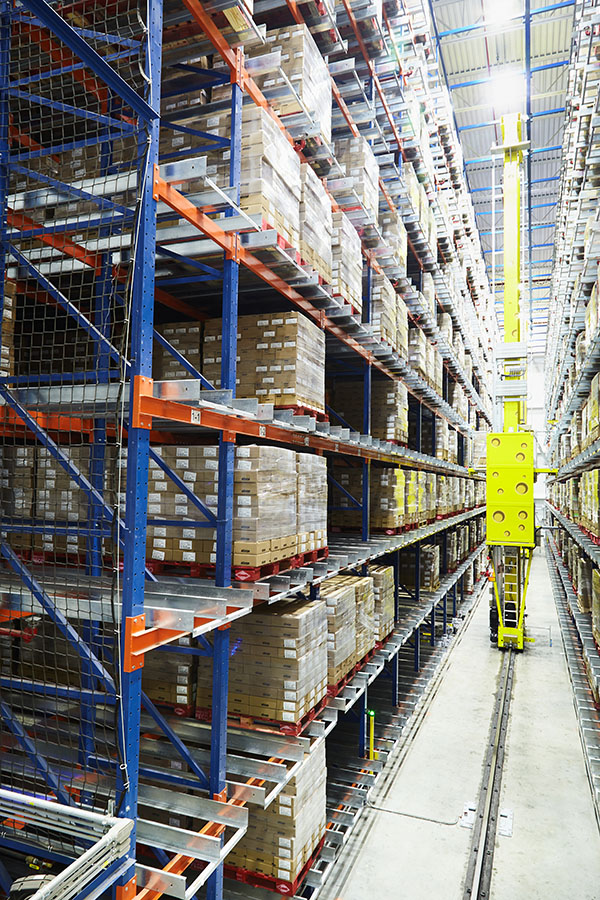
Sargento consults with Westfalia
“We were beginning to run out of space to expand the warehouse, and we needed to look to the future and what that growth will actually look like in the given space,” said Matt Schaub, senior manager of logistics at Sargento. “First, we went over our data with Westfalia, and then we collaborated on the solution.”
The proposed solution for Sargento needed to support both layer picking and full pallet handling, since nearly 60% of the warehouse operations revolve around these processes. Any system would also have to accommodate warehouse activities during implementation and ensure that the warehouse would be able to continue filling orders without a gap in throughput.
“One of the challenges that we were facing was the amount of expansion we needed within our distribution center and the amount of storage needed to support our growth,” said Bruce Wisnefske, director of advanced manufacturing operations at Sargento. “Another challenge was implementing the system in an existing facility.”
ASRS follows two-phase approach
Sargento looked to Westfalia to help it increase storage density and improve outbound fulfillment with warehouse automation. After analyzing the data and understanding the cheese maker's throughput rates, the robot supplier developed a two-phased approach to streamline Sargento's warehousing and distribution of outbound orders:
- Phase 1: Build and install an automated storage and retrieval system (ASRS) by adding a conventional high-rise cooler.
- Phase 2: Install a low-bay ASRS, layer-picking system, and order-staging system in the space previously occupied by the inventory now stored in the high-bay ASRS.
Westfalia worked with the Sargento engineering team to design a system that was easy to support, operate, and maintain. Together, they looked at various designs using Westfalia’s high-density ASRS integrated with a layer-picking system.
The entire setup is run by Westfalia’s Savana.NET warehouse execution system (WES) to optimize order fulfillment from picking products to delivering them to the order staging area.
“With the warehouse execution system, Westfalia provided a one-stop solution that automates and controls order handling within the distribution center,” said Wisnefske. “Savana.NET controls our fulfillment, the pick missions, and getting all materials to the order-staging area so that it is prepared and ready for trucks.”
Thanks to the company's phased-installation approach, Sargento said it was able to continue operations and maintain outbound orders and customer satisfaction.
Sargento reports strong results
By adding Westfalia’s automation, Sargento said it has increased the storage density of its warehouse and extended the life of the current DC. By coupling ASRS technology with production, the company was able to eliminate manual pallet handling.
Furthermore, Sargento was able to eliminate the need for case picking as a result of the automatic layer-picking system so that processing orders became streamlined. The ASRS dramatically increased floor space, and the company is now able to turn trucks much faster on the loading docks and ensure product is not handled manually until loading.
There are future plans for a new project that will expand the low-bay ASRS, adding 6,000 pallet positions to rid Sargento of the need to outsource storage. It will gain more control by having inventory on-site. This expansion of inventory capacity and throughput is sure to save Sargento both time and cheddar.
“Our warehousing operations were dated, and we needed to look towards the future to prepare for growth,” Schaub said. “Westfalia’s automation solution has provided us with the warehouse capacity to sustain our long-term growth.”
“By implementing Westfalia's automation, we were actually able to extend the life of our current distribution center by up to a decade, thanks to the higher-density storage,” said Wisnefske.
Editor's note: This case study posted with permission from Westfalia Technologies.
Article topics
Email Sign Up

